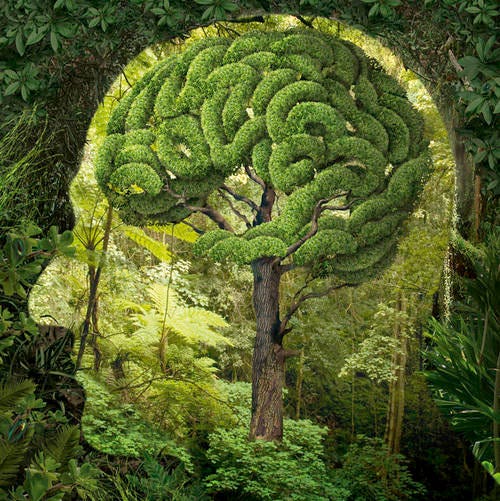?How nature communicates with humans
Literature often uses nature as a way of expression. The natural world communicates emotions, principles, and messages to humans. Poems, essays, stories and other works of literature draw expressive/suggestive meanings from the natural world. They compare the symbolism expressed in nature with human emotions and their lives. Writers like Walt Whitman, Emily Dickinson and Ralph Waldo Emerson express how nature communicates with humans. They express the role and meaning of nature in human lives.
The natural world cannot talk but it does communicate. Humans find symbols in nature and are able to relate their life to the way nature works. Emily Dickinson sees nature as an idle for perfection. She expresses this in her poem “ ‘Nature’ Is What We See”. “Nature is what we know — /Yet have no art to say — So impotent Our Wisdom is/To her Simplicity”. The message of this poem is that all humans are surrounded by nature yet no art or skill has the level of perfection that the nature has (“The Empirical Imagination of Emily Dickinson.” pp. 144–148.). The poem captures the main reason for finding meaning in nature. It is the perfection of nature that make humans find meaning in the natural world. The nature teaches humans the meaning of life.
Some of these morals and lessons taught by nature are explicitly expressed in Walt Whitman’s ‘Song of myself’. Whitman sees nature as a force of unity and focuses on his connection with nature. Throughout the poem his theory of nature posits that everybody is connected to nature and each atom of the body is related to something else. For example in the poem, the grass is related to everything in the universe. “Whitman focuses on the behavior of the grass, its waving, ‘uttering’, motion, which in combination with its now-perceived tonguelike shape and tonguelike darkness of color, calls to mind another of the grass’s properties, one it shares with every other object of the universe” ( “Walt Whitman’s Theory of Nature” pg.199) The natural world makes people understand relations, indirectly it teaches humans empathy and sympathy. The way the natural world is constructed acts as its way of communication.

In the essay “Nature” by Ralph Waldo Emerson, Emerson compares the nature with the divine and believes in the idea of a divine universal spirit. “In the woods, we return to reason and faith,” Emerson wrote. “There I feel that nothing can befall me in life, — no disgrace, no calamity, (leaving me my eyes,) which nature cannot repair. Standing on the bare ground, — my head bathed by the blithe air, and uplifted into infinite space, — all mean egotism vanishes. I become a transparent eye-ball; I am nothing; I see all; the currents of the Universal Being circulate through me; I am part or particle of God”. To seek the truth about his existence and the world, he talks to nature. Nature is the canvas of god. It is wise because the words of nature come from his intuition and nature acts like a vehicle of thought for him. (“Reading Emerson on the Right Side of the Brain.” Modern Language pp. 24–31.)
In the essay, Emerson describes nature’s communication going beyond just products of personal thought. “By a few strokes he delineates, as on air, the sun, the mountain, the camp, the city, the hero, the maiden, not different from what we know them, but only lifted from the ground and afloat before the eye. He unfixes the land and the sea, makes them revolve around the axis of his primary thought, and disposes them anew … To him, the refractory world is ductile and flexible; he invests dust and stones with humanity, and makes them the words of the Reason”. Emerson is not just expressing symbolism here. He is aware of something more dynamic and more subtle, something that has the power to unfix the reality we think we know. He undermines the “fact” that the external reality is the ultimate reality. ( “Reading Emerson on the Right Side of the Brain.” Pg. 29). In his view, nature is not just a mere creation of perceptions. Nature’s communication with humans goes beyond symbolism, it transcends humans to experience life differently.

This nature’s form of communication is mostly a sense of knowing, of understanding, of feeling, of inferring information. It’s like a thought that comes to mind, or an emotion we experience. Due to this, Nature’s message can be interpreted in different ways. Each individual understands a symbol in nature differently. For example Birds have different forms and meanings in nature. Edgar Allan Poe uses a bird to express darkness and death in ‘The Raven’ whereas Emily Dickinson uses a bird to express hope in the poem ‘“Hope” is the thing with feathers’.
Each individual finds different meanings in nature and understands nature differently. Nature is the voice of human’s consciousness and how one understands the world. Emerson expresses “Nature always wears the colors of spirit” (“Nature” Pg.22). This is what makes nature’s communication so valuable. The voice of nature comes from a person’s spirit.
Citations-
Smith, Gayle L. “Reading Emerson on the Right Side of the Brain.” Modern Language Studies, vol. 15, no. 2, 1985, pp. 24–31.
Brantley, Richard E. “The Empirical Imagination of Emily Dickinson.” The Wordsworth Circle, vol. 32, no. 3, 2001, pp. 144–148.
Kepner, Diane. “From Spears to Leaves: Walt Whitman’s Theory of Nature in ‘Song of Myself.’” American Literature, vol. 51, no. 2, 1979, pp. 179–204.
:Source link you will find below
How nature communicates with humans | by Arnav Singh | Medium


ليست هناك تعليقات:
إرسال تعليق